A Beginner’s Guide to your First Guitar: Why Acoustic is the Way to Go
April 01, 2025

So, you’ve made the decision to buy your very first guitar.....

So, you’ve made the decision to buy your very first guitar. Purchasing your first guitar is a big deal and with so many options in the market today, buying a guitar can be daunting and overwhelming. Whether your budget is €200 or €2000, choosing the right guitar for you is equally important.
Have you ever seen a video or overheard conversations in a music shop where they use words like “Tele”, “humbucker”, “Strat” “action” or “dreadnought”? well, just like any hobby there are many words in the guitar world that people like to flash around, and this can be intimidating when you don’t understand what they mean. I will help you get a better understanding of the basics of what you would be looking for when buying a guitar and help you understand some of these flashy words. This will help you rule out certain likes and dislikes in what you are looking for before going into a music shop.
For the purposes of this blog, it will be tailored to beginner guitarists who are either completely new to guitar or have learned a few basics and would like to buy their first guitar. While there are some people who will begin their guitar journey with an electric guitar, I think it can be widely agreed by both players and teachers that for most people starting to play, an acoustic guitar has more benefits when starting compared to an electric guitar. We will be creating another blog that is targeted toward buying your first electric guitar too!
Acoustic vs Electric
It can be easy to see a YouTube video of your favourite guitarist shredding a solo and get carried away wanting to jump straight into a full electric guitar setup, but the initial issue with wanting an electric guitar will be the cost.
When buying an electric you must buy:
1. Your Electric Guitar
2. An Amp
3. Cables and possibly other accessories
Whereas an acoustic player just needs their guitar. See, acoustic guitars are built with a hollowed body so that the guitar acts as its own amplifier, this makes it easy to play without the need for power from an amp. Depending on the different shape and size of the acoustic guitar some are louder than others. One thing to consider is how loud you are going to want your guitar and where do you see yourself using it? Do you want it for gigging? bedroom playing? or for small audiences?
The Different Acoustic shapes:
Travel/Small body: A smaller scaled guitar, used famously by Ed Sheeran. This style of guitar is handy for travelling as it won’t take up much space but would be considered quieter compared to other styles as it has a smaller body. The small body guitar is becoming very popular today as it is playful and easy to pick up. such as the
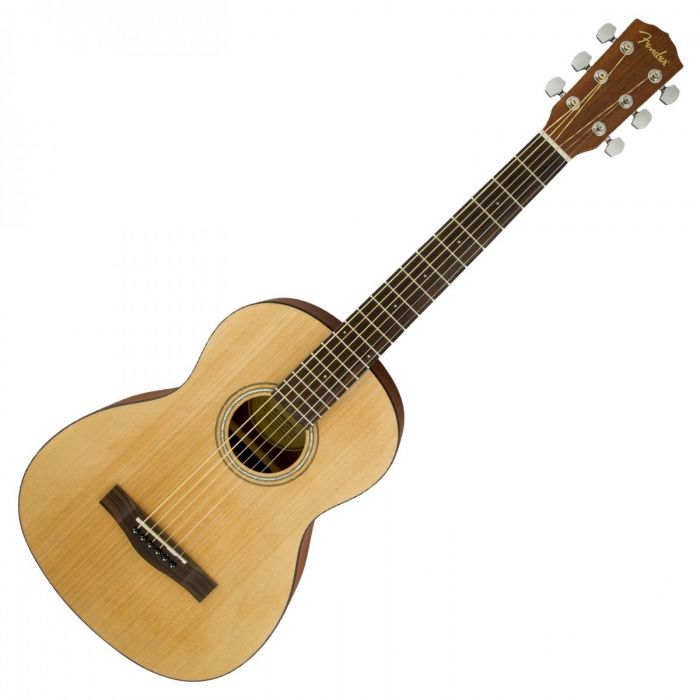
Fender FA-15 3/4 Size Guitar
Parlour or Parlor: Famously used by Bob Dylan, this guitar is also a smaller sized body but has a full-sized scale length that gives it more range in its sound and a comfortable feel when playing. such as the Richood P-50
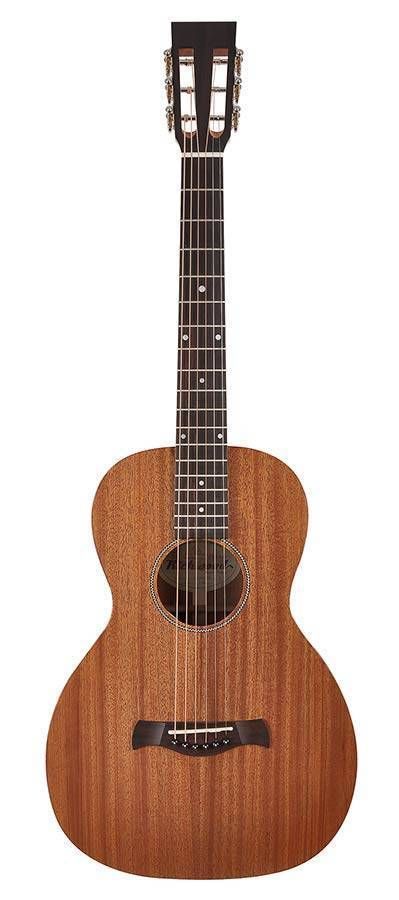
Richwood P50 Parlor Guitar
Concert: The concert acoustic shape is both bigger and louder than the Parlour and travel sizes. The bigger body gives the guitar the ability to reach lower bass sounds compared to the other two. This type of guitar has been used by John Mayer and can be described is a great all-rounder.
Auditorium: Bigger than a parlour but smaller than a dreadnought, this guitar fits right in the middle for fingerpicking players and strummers, and is a very popular choice at the moment for beginner guitarists. This guitar is versatile and is perfect for any kind of genre. The bigger sized body expands its tonal range and gives players the ability to be even louder again than the guitars listed above. such as the RA-12.
Dreadnought: Possibly the most common shape of them all, the dreadnought is a larger size guitar and can be used for all genres from folk and bluegrass to pop and rock. This type of guitar has been used famously by players such as Kurt Cobain, Johnny Cash and Neil Young. such as the A4DSVS
Jumbo: The biggest of them all, the jumbos large dimensions will not suit every player. This guitar is popular for its range in volume and in tone, commonly used in songs with powerful strumming and chords. such as the HSJ-55-GS (Lee, 2022)

Versatility:
Another issue with electric guitars for a beginner is versatility. If you want to be able to pick up the guitar anytime and strum a few chords or want to bring your guitar to a campfire or a party, you will not have fun carrying your 20kg amp around with you and then trying to find a power source.
The electric guitar can be a great progression on from acoustic playing once you have learned the fundamentals, then you will have gotten a better understanding of what style of music you like to play. There are many types of electric guitars that are suited to different genres of music. Telecaster guitars are known well in country music, Stratocasters in blues, funk and rock, and Les Paul style guitars in heavier rock music, just to name a few. Although each guitar is not tied to a genre it does limit aspects of what you can play with each guitar, so to avoid buying an expensive electric guitar and later realising you should have gotten something else, it is best to start with your trusted acoustic.
Steel string or nylon string?
You might have had a toy guitar as a child, or picked up a younger kid’s guitar to notice that the strings are softer than the steel strings you see on other guitars. Most children guitars have these nylon strings so that is it softer on the fingers when they are learning to play. It can be good for younger players to start with nylon strings, so they aren’t discouraged by sore fingers, but playing a nylon stringed guitar could create limitations to a new player that wants to progress on the one instrument.
Nylon strings are great for lighter playing, generally finger picking. They create a warm sound and are perfect if you have decided that jazz, bossa nova or classical music is your passion. But if you are a beginner and have not figured out the genre you want to play then it is better to start on a steel string guitar. It is better to buy a steel stringed guitar and use lighter gauge strings or even nylon strings if you must, rather than the other way around. Guitars that are purposely built for nylon strings do not have the same support on the neck that steel stringed guitars do, so if you decide that you want to replace your nylon guitar with steel strings, your guitar will likely bend or even snap in half.
Comfort:
Possibly one of the most overlooked aspects and considerations when buying a guitar is if you think the guitar is comfortable. The wonderful thing about playing the guitar is that it becomes addictive, and if you get to a stage where you will be playing the guitar for hours at a time then you want to be comfortable with the guitar. So, when you go to try a guitar next time in person ask yourself these questions:
Does the guitar feel comfortable in my hands?
It is self-explanatory, but do you actually like the feeling of the guitar when you are playing it?
Can I comfortably move up and down the fretboard?
being able to move up and down the neck of the guitar is very important, you don’t want to be straining your wrist or arm trying to reach around the guitar.
Is the guitar too heavy for me?
You may well get to a stage of standing and playing, and if this is something you see yourself doing, then you do not want a guitar that is too heavy and could hurt your back.
Is the guitar too big for me?
Similar to checking if you can comfortably move up and down the neck of the guitar, you want to be sure that the body of the guitar is not too big for you as it could make for some uncomfortable playing.
How far are the strings from the fretboard?
The term “action” refers to how close the strings are to the fretboard. Some guitars are set up with a high or low action, low meaning closer to the wood and high meaning a bigger gap between the wood and strings. Generally speaking, a guitar with a low action compared to a high action guitar is easier to play because you have to put less pressure on your fingers to make clear notes from the guitar. Although, a high action guitar is not a deal breaker, you can usually have this adjusted to be lower to a degree based on the guitar type.




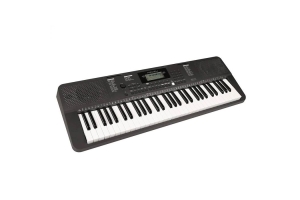
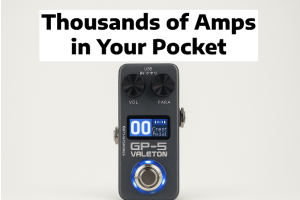

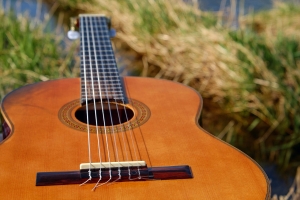

Please complete your information below to login.
Sign In
Create New Account